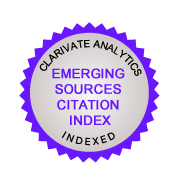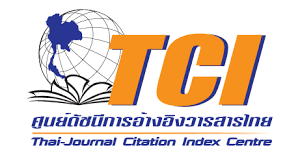Effect of tig welding parameters on strain-age cracking in joining nickel-based superalloy, GTD-111 with Inconel 625
Keywords:
TIG welding, Strain-age cracking, Nickel-based superalloyAbstract
Excellent mechanical properties at high temperature of nickel-based superalloys brought them to extensive application in severe operating conditions. However, the great mechanical properties deteriorate after long-term exposure to high temperature and it frequently causes failure of the component e.g. cracking. TIG welding is considered as an economical way to refurbish the minor damage component as replacement with new one is costly due to high material cost and complexity in manufacturing processes. Unfortunately, heat from welding that applies to the component may create new cracks during and after process from liquation and strain-age cracking. This phenomena is problem especially in precipitation-hardened alloy e.g. GTD-111. Several mitigations, such as pre-weld heat treatment, are proposed to avoid weld cracking occurrence, but most of them require additional process which takes time and cost. In this work, four different TIG welding conditions were studied in non-pre-weld heat treated GTD-111 with IN-625 filler wire for their effect on crack occurrence after welding and after post-weld heat treatment (PWHT). Cracking in heat-affected zone (HAZ) was observed in none of as-welded condition specimens. After PWHT, cracking was found in condition in one condition with welding energy of 198 W. The microstructure study showed the possibility to produce crack-free TIG weld of GTD-111 without pre-weld heat treatment process.Downloads
References
Scilke, P. (2004). Advanced Gas Turbine Materials and Coatings. GE Energy, NY.
Kou, S. (2003). Welding Metallurgy, 2nd. John Wiley & Sons, New York.
Ojo, O. A., Richards, N. L. and Chaturvedi, M. C. (2006). Study of the fusion zone and heataffected zone microstructures in tungsten inert gas-welded INCONEL 738LC superalloy. Metall. Mater. Trans. A. 37(2) : 421-433.
Ojo, O. and Chaturvedi, M. C. (2005). On the role of liquated γ′ precipitates in weld heat affected zone microfissuring of a nickel-based superalloy. Mater. Sci. Eng. A. 403(1-2) : 77-86.
Montazeri, M. and Ghaini, F. (2012). The liquation cracking behavior of IN738LC superalloy during low power Nd : YAG pulsed laser welding. Mater. Charact. 67 : 65-73.
Rush, M., Colegrove, P., Zhang, Z. and Courtot, B. (2010). An investigation into cracking in nickel-base superalloy repair welds. Adv. Mater. Res. 89-91 : 467-472.
Sajjadi, S., Zebarjad, S., Guthrie, R. and Isac, M. (2006). Microstructure evolution of highperformance Ni-base superalloy GTD-111 with heat treatment parameters. J. Mater. Process. Tech. 175(1) : 376-381, 2006.
Rojhirunsakoo, T., Thongpian, D., Chuankrerkkul, N. and Wangyao, P. (2015). Effect of Pre-Weld heat treatment temperatures on TIG welded microstructures on nickel base superalloy, GTD-111. Key Eng. Mater. 658 : 14-18.
Said, A., Syarif, J. and Sajuri, Z. (2008). HAZ Characterization of GTD-111 Nickel based superalloy welding. in Engineering Postgraduate Conference (EPC). Malaysia
Montazeri, M. and Ghaini, F. (2012). The liquation cracking behavior of IN738LC superalloy during low power Nd : YAG pulsed laser welding. Mater. Charact. 67 : 65-73.
Yang, C., Xu, Y., Nie, H., Xiao, X., Jia, G. and Shen, Z. (2013). Effects of heat treatments on the microstructure and mechanical properties of Rene 80. Mater. Des. 43 : 66-73.
Downloads
Published
How to Cite
Issue
Section
License
Copyright (c) 2016 Journal of Metals, Materials and Minerals

This work is licensed under a Creative Commons Attribution-NonCommercial-NoDerivatives 4.0 International License.
Authors who publish in this journal agree to the following terms:
- Authors retain copyright and grant the journal right of first publication with the work simultaneously licensed under a Creative Commons Attribution License that allows others to share the work with an acknowledgment of the work's authorship and initial publication in this journal.
- Authors are able to enter into separate, additional contractual arrangements for the non-exclusive distribution of the journal's published version of the work (e.g., post it to an institutional repository or publish it in a book), with an acknowledgment of its initial publication in this journal.








